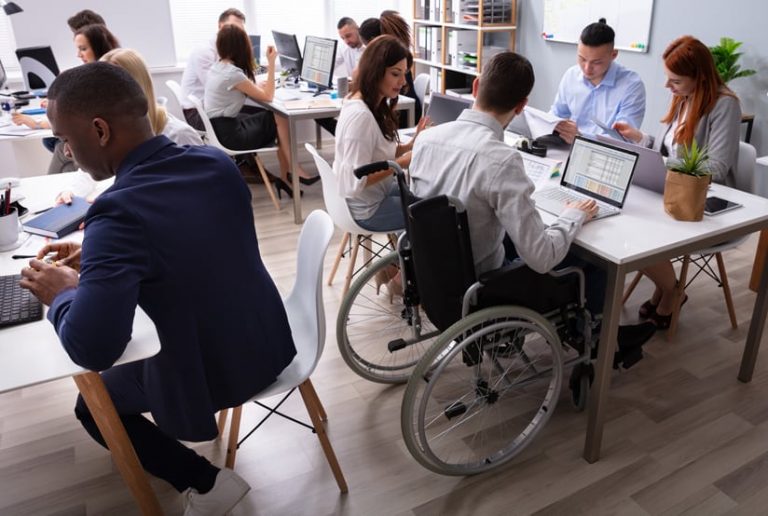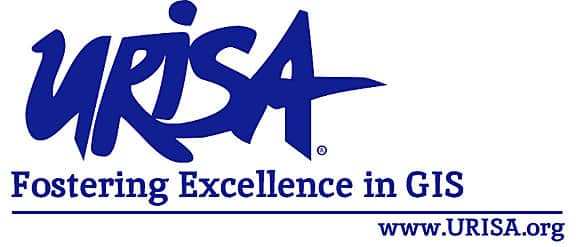The last year and a half has been marked by the intersection of the COVID-19 pandemic, increased awareness of ongoing racism, and technological advances. The confluence of these powerful and transformative events has provided fertile ground for accomplishing real and lasting change. The opportunity to create a new, shared vision of a more equitable future is at a tipping point, and people’s urge to take concrete action is palpable.
Race and place predict whether people have the opportunity to thrive, so geography matters. US president Joseph Biden recognized this when, on the day of his inauguration, he signed the Executive Order on Advancing Racial Equity and Support for Underserved Communities Through the Federal Government. This order pinpoints the need to assess the geographic location of underrepresented or disadvantaged communities and to manage programs using technology.

The GIS profession is uniquely situated to lead the change that this executive order envisions. GIS practitioners are change agents that have brought new ways of doing business into organizations for the last several decades. Thus, it is no surprise that many GIS professionals are ready and eager to help make equity and social justice a reality.
The Urban and Regional Information Systems Association (URISA), with support from many key staff members at Esri, is answering that call to action by modeling how to institute organizational change and creating volunteer opportunities to do this transformative work. There are various ways to contribute that correspond to where GIS practitioners are in their own journeys regarding equity and social justice work, as well as to the level of commitment they can make.
Begin with Individual Change
The first and most important step to take to confront racism and other systems of oppression that lead to inequities is at the individual level. Prosci, a leading change management organization, recognizes this in its article “5 Tenets of Change Management,” which states, “Organizational change requires individual change.”
Challenging topics such as racism, equity, and social justice are often thought to be easier to work through in external settings, by participating in or donating to organizations doing work on institutional racism, for example. However, Dr. Tiffany Jana—CEO of TMI Consulting Inc., cofounder of Loom Technology, and partner at Now Partners—reminds us that the core of what we can do to heal racism lies within ourselves.
“The minute that we are unkind to another human being, it doesn’t matter what their identity is, necessarily. An act of unkindness, a thought of unkindness, or any action that makes one person feel excluded or a group of people feel excluded, these are the [kinds] of actions that reflect something back at us,” Jana stated in a lecture they gave during the Inner MBA program for New York University’s MindfulNYU program.
Most people are afraid of this unwanted reflection of themselves. Instead of lashing out because of fear, though, Jana went on to explain that “the minute that you find those experiences, or you know that you have not been kind, or you know that your thoughts were biased and a little bit skewed, it’s important to identify those, to forgive yourself, and [to] have grace for yourself, understanding that this is a journey…and all of it is an opportunity to learn and grow.”
GIS is a powerful tool for driving transformative change. It is imperative that each practitioner use the technology consciously and with clarity of character to create welcoming spaces that foster equity and belonging.
URISA Leads by Example
Just as it is important for individuals to confront racism, it is also crucial for organizations to reflect on their work and look for opportunities to modify policies, practices, and procedures that contribute to institutional racism.
Leading by example, URISA has formed the Pro-Equity Anti-Racism (PEAR) committee, which will review the organization’s internal practices annually and inform its yearly work plans and budgets. The committee is led by pioneering professionals in the GIS field who have extensive experience doing this invaluable work at other organizations. PEAR worked with URISA’s GISCorps to gain a valuable volunteer, Rylee Wrenner, to use ArcGIS Hub to create a hub site—scheduled to launch later this year—that supports community involvement in pro-equity and antiracism efforts. Anyone with experience in antioppression work, particularly in antiracism, is encouraged to reach out and lend their expertise to the process. Please email cochairs Nicole D. Franklin at customerservice@enhanced-interactions.com or Greg Babinski at greg.babinski@kingcounty.gov to learn more about PEAR.
URISA also established the GIS for Equity and Social Justice workgroup, which is poised to take external action against racism and social injustice as part of the Professional Education Committee. In partnership with PEAR, these groups authored URISA’s Anti-Racism Pro-Equity & Social Justice Statement as well as An Open Letter to Acknowledge and Combat Anti-Asian Hate. Other areas of focus for this workgroup are GIS and redistricting, developing social justice indicators, hosting workshops, writing book reviews, and putting together informative articles to continue educating URISA members—and others—about these important topics. To learn more, reach out to the GIS for Equity and Social Justice workgroup chair, Judy Colby-George, at jcg@spatialalternatives.com.
If staying local is more enticing, connecting with local URISA chapters is also a great way to get involved. The New England Chapter of URISA (NEURISA), for example, is in the process of organizing a new GIS for Social Justice subcommittee. To learn more about this initiative, email NEURISA chapter president Jodie Gosselin at neurisa@gmail.com.
Tools That Can Help Bring About Change
While the focus of this article has been on making personal and institutional change, it is also useful to talk about the tools that can help bring about these transformations. Esri has developed a framework, along with targeted geospatial solutions, to advance racial equity and social justice. Esri education manager Joseph Kerski also has a great blog that highlights good resources for teaching about racial equity and social justice using GIS.

In addition, PEAR committee cochairs Franklin and Babinski developed a half-day workshop to introduce GIS professionals to doing racial equity and social justice work. Registration is open. In 2019, Babinski was awarded the EthicalGEO Fellowship by the American Geographical Society to study how GIS is an effective tool for equity and social justice work. The resultant article, which contains best practices, has been peer reviewed by more than 50 GIS professionals and ethical and social justice practitioners.
What About Other Inequities?
Given that URISA and Esri have made antiracism a priority, this might spark curiosity about how other oppressed communities—including but not limited to women, immigrants, members of the LGBTQIA community, and people who identify as neurodivergent and differently abled—will be heard.
By examining where institutional racism exists in GIS, new practices will be put in place that ensure that other underserved groups gain a sense of belonging, too. In short, antioppression work that utilizes an equity lens for one underserved community helps lead the way for equitable change for all.
Now is the time to create lasting change for racial equity. Please join the effort at whatever level resonates with you, with whatever time commitment you can make. Let’s also keep the conversation going on URISA Connect.
Learn more about other URISA volunteer opportunities. For more information, email Kathryn Brewer at kathrynb@spatial-relationships.com.



